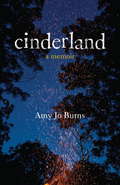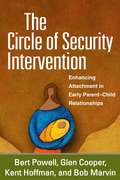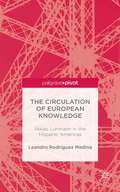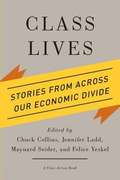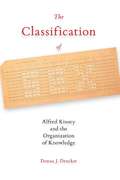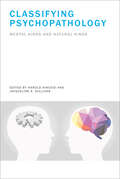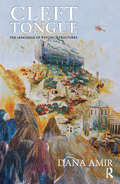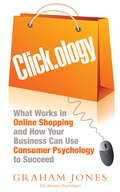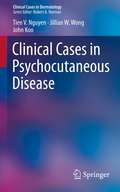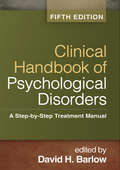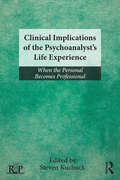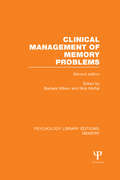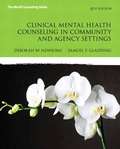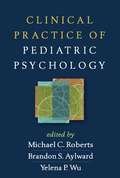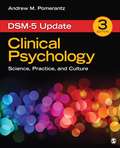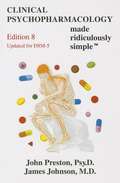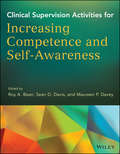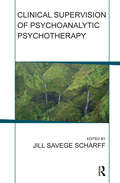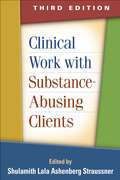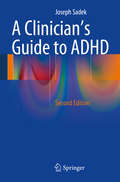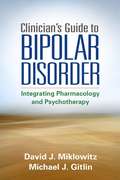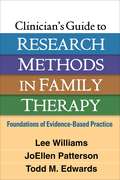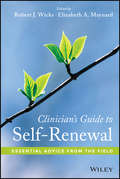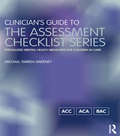- Table View
- List View
Cinderland
by Amy Jo BurnsA riveting literary debut about the cost of keeping quietAmy Jo Burns grew up in Mercury, Pennsylvania, an industrial town humbled by the steel collapse of the 1980s. Instead of the construction booms and twelve-hour shifts her parents' generation had known, the Mercury Amy Jo knew was marred by empty houses, old strip mines, and vacant lots. It wasn't quite a ghost town--only because many people had no choice but to stay. The year Burns turned ten, this sleepy town suddenly woke up. Howard Lotte, its beloved piano teacher, was accused of sexually assaulting his female students. Among the countless girls questioned, only seven came forward. For telling the truth, the town ostracized these girls and accused them of trying to smear a good man's reputation. As for the remaining girls--well, they were smarter. They lied. Burns was one of them. But such a lie has its own consequences. Against a backdrop of fire and steel, shame and redemption, Burns tells of the boys she ran from and toward, the friends she abandoned, and the endless performances she gave to please a town that never trusted girls in the first place. This is the story of growing up in a town that both worshipped and sacrificed its youth--a town that believed being a good girl meant being a quiet one--and the long road Burns took toward forgiving her ten-year-old self. Cinderland is an elegy to that young girl's innocence, as well as a praise song to the curative powers of breaking a long silence. From the Hardcover edition.
The Circle of Security Intervention
by Charles H. Zeanah Jr. Bob Marvin Glen Cooper Bert Powell Kent HoffmanPresenting both a theoretical foundation and proven strategies for helping caregivers become more attuned and responsive to their young children's emotional needs (ages 0-5), this is the first comprehensive presentation of the Circle of Security (COS) intervention. The book lucidly explains the conceptual underpinnings of COS and demonstrates the innovative attachment-based assessment and intervention strategies in rich clinical detail, including three chapter-length case examples. Reproducible forms and handouts can be downloaded and printed in a convenient 8 1/2" x 11" size. COS is an effective research-based program that has been implemented throughout the world with children and parents experiencing attachment difficulties.The authors are corecipients of the 2013 Bowlby-Ainsworth Award, presented by the New York Attachment Consortium, for developing and implementing COS.
The Circulation of European Knowledge: Niklas Luhmann in the Hispanic Americas
by Leandro Rodriguez MedinaThis book studies the circulation of social knowledge by focusing on the reception of Niklas Luhmann's systems theory in Hispanic America. It shows that theories need active involvement from scholars in the receiving field in order to travel.
The Civic Culture Transformed
by Russell J. Dalton Christian WelzelThis book reevaluates Almond, Verba, and Pye's original ideas about the shape of a civic culture that supports democracy. Marshaling a massive amount of cross-national, longitudinal public opinion data from the World Values Survey Association, the authors demonstrate multiple manifestations of a deep shift in the mass attitudes and behaviors that undergird democracy. The chapters in this book show that in dozens of countries around the world, citizens have turned away from allegiance toward a decidedly "assertive" posture to politics: they have become more distrustful of electoral politics, institutions, and representatives and are more ready to confront elites with demands from below. Most importantly, societies that have advanced the most in the transition from an allegiant to an assertive model of citizenship are better-performing democracies - in terms of both accountable and effective governance.
Class Lives: Stories From Across Our Economic Divide
by Chuck Collins Jennifer Ladd Maynard Seider Felice YeskelClass Lives is an anthology of narratives dramatizing the lived experience of class in America. It includes forty original essays from authors who represent a range of classes, genders, races, ethnicities, ages, and occupations across the United States. Born into poverty, working class, the middle class, and the owning class--and every place in between--the contributors describe their class journeys in narrative form, recounting one or two key stories that illustrate their growing awareness of class and their place, changing or stable, within the class system. The stories in Class Lives are both gripping and moving. One contributor grows up in hunger and as an adult becomes an advocate for the poor and homeless. Another acknowledges the truth that her working-class father's achievements afforded her and the rest of the family access to people with power. A gifted child from a working-class home soon understands that intelligence is a commodity but finds his background incompatible with his aspirations and so attempts to divide his life into separate worlds. Together, these essays form a powerful narrative about the experience of class and the importance of learning about classism, class cultures, and the intersections of class, race, and gender. Class Lives will be a helpful resource for students, teachers, sociologists, diversity trainers, activists, and a general audience. It will leave readers with an appreciation of the poignancy and power of class and the journeys that Americans grapple with on a daily basis.
The Classification Of Sex: Alfred Kinsey And The Organization Of Knowledge
by Donna DruckerAlfred C. Kinsey’s revolutionary studies of human sexual behavior are world-renowned. His meticulous methods of data collection, from comprehensive entomological assemblies to personal sex history interviews, raised the bar for empirical evidence to an entirely new level. In The Classification of Sex, Donna J. Drucker presents an original analysis of Kinsey’s scientific career in order to uncover the roots of his research methods. She describes how his enduring interest as an entomologist and biologist in the compilation and organization of mass data sets structured each of his classification projects. As Drucker shows, Kinsey’s lifelong mission was to find scientific truth in numbers and through observation—and to record without prejudice in the spirit of a true taxonomist. <p><p> Kinsey’s doctoral work included extensive research of the gall wasp, where he gathered and recorded variations in over six million specimens. His classification and reclassification of Cynips led to the speciation of the genus that remains today. During his graduate training, Kinsey developed a strong interest in evolution and the links between entomological and human behavior studies. In 1920, he joined Indiana University as a professor in zoology, and soon published an introductory text on biology, followed by a coauthored field guide to edible wild plants. <p> In 1938, Kinsey began teaching a noncredit course on marriage, where he openly discussed sexual behavior and espoused equal opportunity for orgasmic satisfaction in marital relationships. Soon after, he began gathering case histories of sexual behavior. As a pioneer in the nascent field of sexology, Kinsey saw that the key to its cogency was grounded in observation combined with the collection and classification of mass data. To support the institutionalization of his work, he cofounded the Institute for Sex Research at Indiana University in 1947. He and his staff eventually conducted over eighteen thousand personal interviews about sexual behavior, and in 1948 he published Sexual Behavior in the Human Male, to be followed in 1953 by Sexual Behavior in the Human Female. <p> As Drucker’s study shows, Kinsey’s scientific rigor and his early use of data recording methods and observational studies were unparalleled in his field. Those practices shaped his entire career and produced a wellspring of new information, whether he was studying gall wasp wings, writing biology textbooks, tracing patterns of evolution, or developing a universal theory of human sexuality.
Classifying Psychopathology: Mental Kinds and Natural Kinds (Philosophical Psychopathology)
by Harold Kincaid Jacqueline A. SullivanScholars question the extent to which current psychiatric classification systems are inadequate for diagnosis, treatment, and research of mental disorders and offer suggestions for improvement. In this volume, leading philosophers of psychiatry examine psychiatric classification systems, including the Diagnostic and Statistical Manual of Mental Disorders (DSM), asking whether current systems are sufficient for effective diagnosis, treatment, and research. Doing so, they take up the question of whether mental disorders are natural kinds, grounded in something in the outside world. Psychiatric categories based on natural kinds should group phenomena in such a way that they are subject to the same type of causal explanations and respond similarly to the same type of causal interventions. When these categories do not evince such groupings, there is reason to revise existing classifications.The contributors all question current psychiatric classifications systems and the assumptions on which they are based. They differ, however, as to why and to what extent the categories are inadequate and how to address the problem. Topics discussed include taxometric methods for identifying natural kinds, the error and bias inherent in DSM categories, and the complexities involved in classifying such specific mental disorders as “oppositional defiance disorder” and pathological gambling.ContributorsGeorge Graham, Nick Haslam, Allan Horwitz, Harold Kincaid, Dominic Murphy, Jeffrey Poland, Nancy Nyquist Potter, Don Ross, Dan Stein, Jacqueline Sullivan, Serife Tekin, Peter Zachar
Cleft Tongue: The Language of Psychic Structures
by Dana AmirThis book is an attempt to analyse psychic language and its diverse modes of expression, both within psychic structure and in the interpersonal realm. It begins by looking at two basic forms of delay in the development of psychic language: concrete language, which is based on flattening, and pseudo-language, which is rooted in concealment. The next chapter focuses on the split between voice and meaning which marks psychotic syntax, and the latter's double function in defending the self against an unconscious death wish. The subject of the third chapter is the chameleon language of perversion, and the relationship between the perverse structure and the primal scene. This chapter is followed by one that suggests understanding autistic syntax as an inverse use of the psychic musical 'organ point'. The fifth chapter discusses the absent function of the inner witness in traumatic language. The sixth chapter discusses psychosomatic language through the distinction between metaphorical, metonymical and psychotic bodily expressions.
Clickology
by Graham JonesOnline shopping continues to grow at an astounding rate: in 2012, more than $1 trillion was spent in online retailers alone. The nature of shopping is drastically changing, but with so little information on how best to interact with online customers, how are businesses to succeed?With Click.ology, internet psychologist Graham Jones has filled that gap. Through years of research into Internet psychology and online consumer habits, Jones has written the first how-to of its kind for online businesses. With his C.L.I.C.K. system, businesses will learn the crucial ways in which online shopping differs from traditional brick-and-mortar salesmanship and how to tweak their websites to avoid the dreaded "abandoned shopping cart." Jones tackles tricky psychological subjects such as priming customers for a certain price point and the social aspect of online shopping in a way that makes his strategies easy to implement. In addition to these essential tips, Jones investigates the fast-paced future of ecommerce and what businesses can do to stay ahead of the game. In an online world where customers make their choices in a matter of seconds, Click.ology distills the essentials every company in the online economy needs to know in order to turn clicks into dollars.Graham Jones is an Internet psychologist who helps businesses understand the online behavior of their customers and website visitors. He was one of the first psychologists in the world to start investigating the way human behavior has adapted to the online world. He lives in the United Kingdom.
Clinical Cases in Psychocutaneous Disease (Clinical Cases in Dermatology #0)
by Tien V. Nguyen Jillian W. Wong John KooClinical cases are a key component in modern medical education, assisting the trainee or recertifying clinician to work through unusual cases using best practice techniques. Dermatology is an important discipline in this regard since it is a highly visual subject requiring the reader to describe often very subtle differences in the presentation of patients and define accurately the diagnostic and management criteria to base their clinical decision-making on. This is particularly the case in the field of psychocutaneous disease where scientific advances are shedding new light on the understanding and treatment of long-recognized conditions located at the interface of dermatology and psychiatry. Psychodermatology covers all aspects of how the mind and body interact in relation to the onset and progression of various skin disorders.
Clinical Handbook of Psychological Disorders: A Step-by-Step Treatment Manual (Fifth Edition)
by David H. BarlowThis clinical reference and widely adopted text is recognized as the premier guide to understanding and treating frequently encountered psychological disorders in adults. Showcasing evidence-based psychotherapy models, the volume addresses the most pressing question asked by students and practitioners--"How do I do it?" Leading authorities present state-of-the-art information on each clinical problem and explain the conceptual and empirical bases of their respective therapeutic approaches. Procedures for assessment, case formulation, treatment planning, and intervention are described in detail. Extended case examples with session transcripts illustrate each component of treatment.
Clinical Implications of the Psychoanalyst's Life Experience: When the Personal Becomes Professional (Relational Perspectives Book Series)
by Steven Kuchuck2015 Gradiva Award Winner Clinical Implications of the Psychoanalyst’s Life Experience explores how leaders in the fields of psychoanalysis and psychotherapy address the phenomena of the psychoanalyst’s personal life and psychology. In this edited book, each author describes pivotal childhood and adult life events and crises that have contributed to personality formation, personal and professional functioning, choices of theoretical positions, and clinical technique. By expanding psychoanalytic study beyond clinical theory and technique to include a more careful examination of the psychoanalyst’s life events and other subjective phenomena, readers will have an opportunity to focus on specific ways in which these events and crises affect the tenor of the therapist’s presence in the consulting room, and how these occurrences affect clinical choices. Chapters cover a broad range of topics including illness, adoption, sexual identity and experience, trauma, surviving the death of one’s own analyst, working during 9/11, cross cultural issues, growing up in a communist household, and other family dynamics. Throughout, Steven Kuchuck (ed) shows how contemporary psychoanalysis teaches that it is only by acknowledging the therapist’s life experience and resulting psychological makeup that analysts can be most effective in helping their patients. However, to date, few articles and fewer books have been entirely devoted to this topic. Clinical Implications of the Psychoanalyst’s Life Experience forges new ground in exploring these under-researched areas. It will be essential reading for practicing psychoanalysts, psychotherapists, psychologists, social workers, those working in other mental health fields and graduate students alike.
Clinical Management of Memory Problems (Psychology Library Editions: Memory)
by Barbara Wilson Nick MoffatMany patients with stroke, head injuries or dementia suffer severe memory impairment and in many cases improvement may fail to occur. This book, first published in 1984 followed by this second edition in 1992, offers practical guidelines to the problems and is supported by a discussion of theory about memory systems and functioning. It should enable therapists and psychologists to recognize, understand, assess and manage memory problems arising from injury, accident or infection of the brain. The authors are well-known for their interest in memory and memory therapy. Topics covered in this text include: the relationship between memory and practice, assessment, methods for improving memory, organization of memory therapy, selection of appropriate treatments for individual patients, role of the microcomputer in memory rehabilitation, use of drugs in stimulating memory, development of programmes to improve attention and the treatment of the memory-impaired in groups. This second edition has an update on drugs, electronic aids and assessment procedures, with further evidence of the effectiveness of memory therapy. This book would have been an asset for those professionals involved in the rehabilitation of the impaired memory at the time and can still be of value today.
Clinical Mental Health Counseling in Community and Agency Settings (Fourth Edition)
by Debbie W. Newsome Samuel T. GladdingBeginning counseling students get a comprehensive, user-friendly, real-world look at all aspects of the field of clinical mental health counseling in this popular text. Here the authors combine an insightful introduction to the foundations with a first-hand look at the many roles and functions clinical mental health counselors perform, the variety of settings in which they work, and how that work differs from one client population to another. The focus is on approaches that promote prevention, early intervention, wellness, and advocacy and take into account the client, the environment, and the interaction between the two. Included in this Fourth Edition of Clinical Mental Health Counseling in Community and Agency Settings is new information on professional identity; the effects of today's technological changes, such as cyber bullying and social networking; holistic perspectives; biopsychosocial assessment, case conceptualization, and treatment planning; counseling in today's diverse society; counseling in college and university settings; suicide assessment and intervention; counseling older adults; and more.
Clinical Practice of Pediatric Psychology
by Michael C. Roberts Yelena P. Wu Brandon S. AylwardFilled with vivid clinical material, this book describes effective practices for helping children and their families who are coping with chronic and acute health conditions and their treatment. Concise chapters on the psychosocial challenges associated with specific pediatric health conditions are organized around detailed case presentations. Demonstrating procedures for assessment, case conceptualization, brief intervention, and health promotion, the book highlights ways to collaborate successfully with medical providers and families. Chapters also discuss the varied roles that pediatric psychologists play in hospitals, outpatient clinics, primary care, and educational settings. See also Handbook of Pediatric Psychology, Fourth Edition, edited by Michael C. Roberts and Ric G. Steele, which comprehensively examines links between psychological and medical issues from infancy through adolescence.
Clinical Psychology: Science, Practice, and Culture (Third Edition)
by Andrew M. PomerantzThe book intends to provide a balanced approach to clinical psychology in a professional yet accessible style and includes up-to-date information on all topics.
Clinical Psychopharmacology Made Ridiculously Simple (Eighth Edition)
by John Preston James JohnsonA brief, practical review of the indications for and use of pharmacological agents in the treatment of psychological disorders. Case examples. Chapter on over-the-counter medications and dietary supplements. Updated for DSM-5 classification of psychological disorders.
Clinical Supervision Activities for Increasing Competence and Self-Awareness
by Roy A. Bean Maureen P. Davey Sean D. DavisCultivate self-awareness, empathy, and clinical competence in the mental health professionals you superviseProviding tested guidance for clinical supervisors of mental health professionals, editors Roy A. Bean, Sean D. Davis, and Maureen P. Davey draw from their own backgrounds in training, private practice, and academe, as well as from an international panel of experts representing various mental health fields to provide activities and best practices that allow therapists to better serve an increasingly diverse set of clients and issues.While clinical skills are easily observed, the more subtle areas of self-awareness, or exploring unexamined judgments are more difficult to spot and to provide supervision and guidance for. The numerous experiential activities included will help supervisors and the mental health professional they supervise develop their skills and techniques around:IntuitionEmpathySelf-awarenessMindfulnessMulticultural awarenessPerspective takingThe book covers both clinical as well as diversity-focused competence and awareness, and suggests various forms of activities, including research exercises, reflection, journaling, and more. Each activity includes measurement metrics as well as additional resources that help clinicians identify the best activity for a given situation. Appropriate for clinicians at every level and from a multitude of backgrounds, these tried and tested best practices can be used in clinical supervision, as a class assignment, or to facilitate professional growth.
Clinical Supervision of Psychoanalytic Psychotherapy
by Jill Savege ScharffIn Clinical Supervision of Psychoanalytic Psychotherapy, psychotherapy supervisors from the fields of psychology, psychiatry, social work, and dance movement therapy deal with the ambiguity and complexity of the supervisory role. They attend to the need to establish open, respectful verbal and non-verbal communication, a trusting relationship, a shared language, and a commitment to examining unconscious conflict in the supervisory encounter as well as the patient-therapist dynamics. The contributors show how the supervisor makes room for the supervisee to express her anxieties without becoming her therapist, thereby providing a model for empathic listening but within appropriate boundaries. They also describe the many ways in which the therapist's issues reflect or are triggered by those of the patient, are further reflected in the dynamics of the supervisory pair, and in the institution where supervisee and supervisor work.
Clinical Work with Substance-Abusing Clients, Third Edition
by Shulamith Lala StraussnerA leading professional resource and course text, this book provides practical guidance for treating clients with substance use disorders in a variety of contexts. Expert contributors present major assessment and treatment approaches together with detailed recommendations for intervening with particular substances. Clinical techniques are clearly explained and illustrated with helpful case examples. Important topics include harm reduction; strategies for working with family members; and ways to meet the needs of specific populations, including women, adolescents, older adults, LGBT clients, and those with frequently encountered co-occurring problems. New to This Edition *Revised to reflect current research and clinical advances; updated for DSM-5. *Chapters on trauma-informed care, cognitive-behavioral therapy, and complementary/alternative approaches. *Chapters on neurobiology and behavioral addictions. *Significantly revised chapters on family treatment and dual disorders.
A Clinician's Guide to ADHD
by Joseph SadekThe Clinician's Guide to ADHD combines the useful diagnostic and treatment approaches advocated in different guidelines with insights from other sources, including recent literature reviews and web resources. The aim is to provide clinicians with clear, concise, and reliable advice on how to approach this complex disorder. The guidelines referred to in compiling the book derive from authoritative sources in different regions of the world, including the United States, Canada, Australia, and Europe. After introductory discussion of epidemiology and etiology, guidance is provided on diagnosis in different age groups, differential diagnosis, assessment for potential comorbidities, and the issue of ADHD and driving. Advice is then given on the appropriate use of pharmacological and psychosocial treatment, the management of adverse events, and follow-up. A series of relevant scales, questionnaires, and websites are also included.
Clinician's Guide to Bipolar Disorder
by Michael J. Gitlin David J. MiklowitzThis much-needed volume gives clinicians essential strategies for managing the complexities of bipolar disorder and tailoring treatment to each patient's changing needs. Highly readable, accessible, and pragmatic, the book provides expert guidance on critically important treatment questions. It addresses which medications to try and at what dosages, what psychosocial interventions are most helpful at different phases of the illness, how to continually monitor and fine-tune treatment to keep patients functioning well, and how to involve family members productively. The authors draw on state-of-the-art research as well as extensive clinical experience as a psychotherapist and a psychopharmacologist. Vivid case material is included throughout. Reproducible questionnaires and forms can be downloaded and printed in a convenient 8 1/2" x 11" size.
Clinician's Guide to Research Methods in Family Therapy
by Todd M. Edwards Lee Williams Joellen PattersonA research methods text with a unique focus on evidence-based practice with couples and families, this book bridges the divide between research and clinical work. The text offers comprehensive, user-friendly coverage of measurement and design issues and basic qualitative and quantitative methods. Illustrating research concepts with clinically relevant examples and sample studies, it teaches clear steps for evaluating different types of studies and identifying common threats to validity. Of special value to therapists, it provides a systematic framework for using research to guide the selection and evaluation of interventions that meet the needs of particular clients. Pedagogical features: *End-of-chapter "Applications" sections showing how to evaluate specific methods. *Appendices with quick-reference guides and recommended resources. *Instructive glossary. See also the authors' Essential Skills in Family Therapy, Second Edition: From the First Interview to Termination, which addresses all aspects of real-world clinical practice, and Essential Assessment Skills for Couple and Family Therapists, which shows how to weave assessment into all phases of therapy.
Clinician's Guide to Self-Renewal: Essential Advice from the Field
by Robert J. Wicks Elizabeth A. MaynardProviding clinicians with advice consistent with the current emphasis on working from strengths to promote renewal, this guide presents a holistic approach to psychological wellness. Time-tested advice is featured from experts such as Craig Cashwell, Jeffrey Barnett, and Kenneth Pargament. With strategies to renew the mind, body, spirit, and community, this book equips clinicians with guidance and inspiration for the renewal of body, mind, community, and spirit in their clients and themselves.
Clinician's Guide to the Assessment Checklist Series: Specialized mental health measures for children in care
by Michael Tarren-SweeneyThe Assessment Checklist series, created by Michael Tarren-Sweeney, provides the world’s first standardised caregiver-report measures of a range of attachment- and trauma-related mental health difficulties experienced amongst children growing up in foster, adoptive, kinship and residential care. This clinical manual provides essential guidance for child and adolescent mental health clinicians who use the Assessment Checklist measures, including the Assessment Checklist for Children (ACC), the Assessment Checklist for Adolescents (ACA) and the Brief Assessment Checklists (BAC), as part of their specialized assessments of children and adolescents in care. Split into three parts, the book explores all aspects of using and interpreting the Checklist series. Part 1 provides an overview of the Assessment Checklist measures, the rationale for their development and instructions on how to use the measures for clinical assessment, screening and treatment monitoring. Part 2 provides expert guidance to clinicians on interpreting Assessment Checklist score profiles and provides detailed information about several specific types of mental health difficulties measured by them. Part 3 describes the development and psychometric properties of the various Assessment Checklist measures, including information about their validity and reliability. It also introduces several new measures that are under development. Ideal for clinical child psychologists, child and adolescent psychiatrists, child psychotherapists and clinical social workers looking to improve the quality and depth of their clinical assessments with children and adolescents, this book provides essential guidance on professional use of the Assessment Checklist measures.
